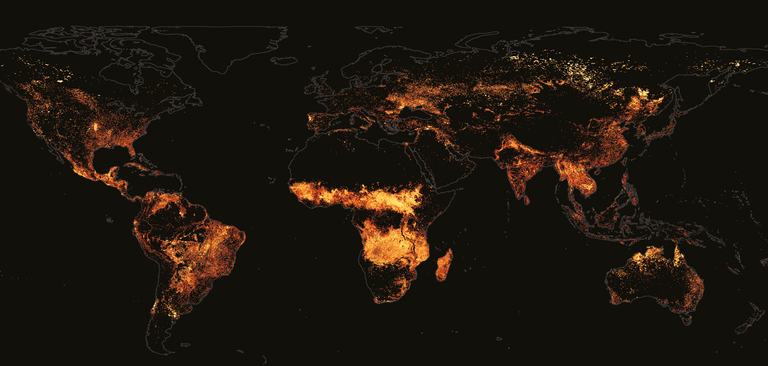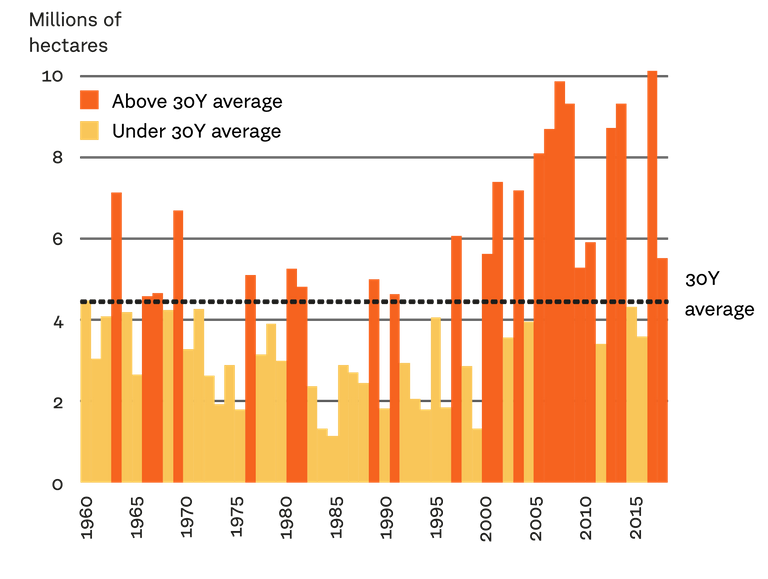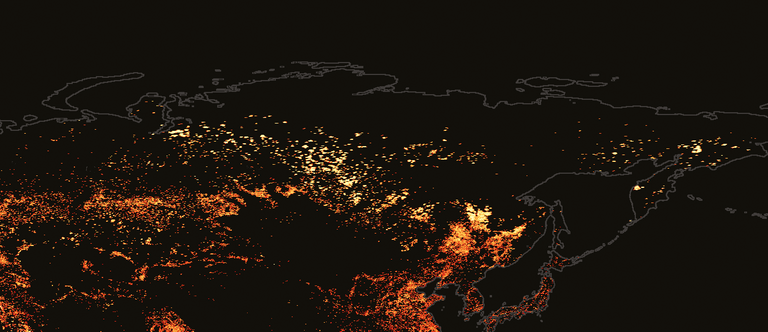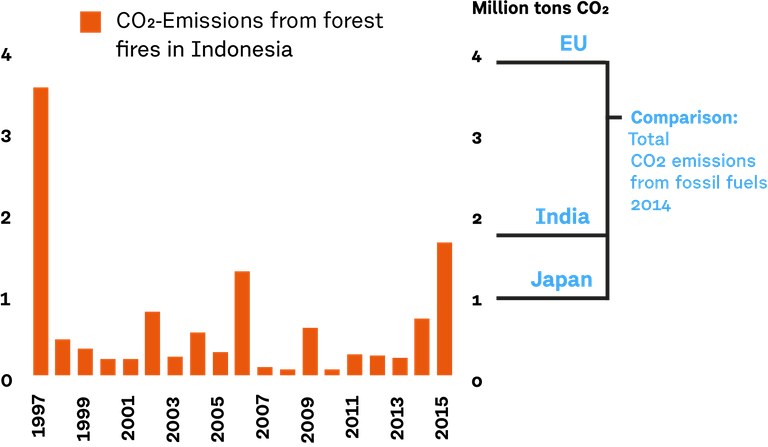The forest fire - global warming nexus are creating an irreversible scenario.
Humans and landscape fire are inextricably intertwined. Although landscape fire is a natural part of the global ecosystem, humans have been influencing fire regimes for millennia. We employ fire as a tool to clear previously forested areas, to change the properties of underlying soils, and to lessen the risk of catastrophic wildfire. We also employ fire suppression as a tool to protect our lives, our assets, and our natural resources.
This complex relationship with fire is further complicated by its complex role within the global climate system. Briefly put, a changing climate leads to more fire-prone conditions for many forests due to warmer temperatures and less precipitation. The resulting fires tend to be larger and more intense, which leads to more greenhouses gases being released to the atmosphere, and less global vegetation to act as a carbon sink.
A collection of satellite data from NASA showing each pixel as a forest fire within 100 sq kilometers over 12 months of 2016. The brighter the pixel, the more frequent the area was affected.

US fire-fighting authorities are among the world's most effective and have collected long-standing reliable data. The historical data show a clear departure from long term trends in the mid-80s. While it is difficult to determine causal relationships in the data, increases in regionally specific wildfires in protected areas such as the Yosemite national park suggest that climate change is a major driving factor of growing forest fires.
US total scorched area from forest fires

Siberia and Alaska are the two regions of the world that experienced the largest increases in average temperatures over the last decade. As a result, intentionally set fires for agricultural land clearance more frequently become uncontrollable wildfires. The wind carries soot left behind by Siberian and Alaskan wildfires north, in turn causing accelerated melting of Arctic sea ice.

To clear land for Indonesian palm oil plantations, hundreds of thousands of hectars of dense rainforests are burnt. What the severe Indonesian fire years of 1997, 2006, and 2015 all have in common is that they were El Niño years. El Niño is a critical factor in exacerbating Indonesian fires, because it tends to deprive the islands of needed rains and drive drought conditions.

Sources: NASA, National Interagency Fire Center (USA), Union of Concerned Scientists, University of Leeds